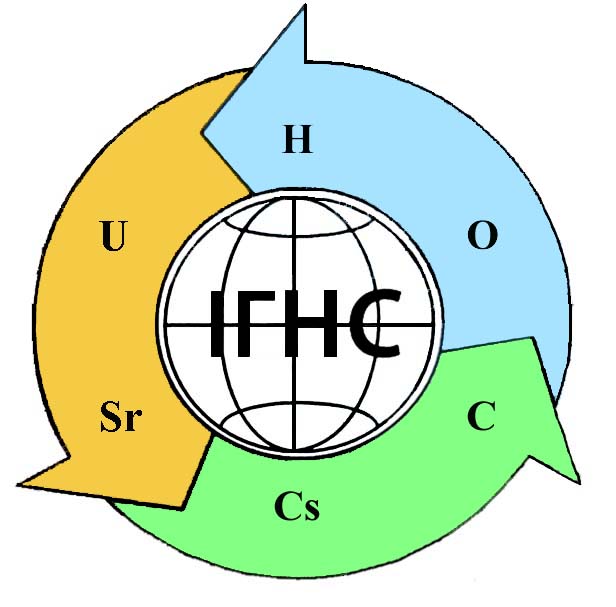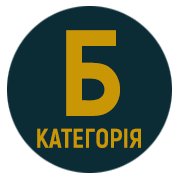MAGNETIC PROPERTIES OF WEAK-MAGNETICMINERALS OF KRYVBASS IRON QUARTZITES
DOI:
https://doi.org/10.15407/geotech2020.32.058Keywords:
oxidized quartzite, magnetization, magnetic force, coercive force, flocculation.Abstract
To reduce the metal loss after grinding in the ore-dressing process, the authors studied the magnetic properties of minerals in Kryvyi Rig oxi-dized quartzites and determined the possibility of their flocculation. Monomineral fractions of hematite, martite, goethite, siderite, and quartz were studied. These minerals have a weak magnetism. It should be borne in mind that the monomineral fractions are not absolutely pure, some of them contain finely disseminated magnetite, which does not unfold even in the 5 micron class. For example, quartz contains from 0.03 to 0.7% of magnetite. The residual magnetization and coercive force of fine quartz particles with a size of 5 microns is twice as large as that of goethite particles. This is one of the causes of clogging of magnetic products. The experimental studies have confirmed the presence of the process of flocculation. In products with an increased mass fraction of magnetite in fields of strength up to 800 kA / m, floccules are formed from magnetite particles. The attraction of weakly magnetic particles to them is insignificant. With an increase in the field induction, floccules are attracted to each other, particles of the main weakly magnetic minerals gradually flocculate on them, especially at strength above 400 kA / m, while at 800 kA / m floccules form more voluminous aggregates arranged in parallel chains in the direction of the field. With a decrease in the particle size of hematite, martite, and goethite, attraction to floccules occurs at smaller distances between them. The joint magnetization of large particles with small ones somewhat facilitates flocculation, especially in a field of 800 kA / m. The research results presented in the article explain the relatively low indicators of the magnetic enrichment of the oxidized quartzites, and the data on the flocculation of the weakly magnetic mineral particles help to improve the indicators of enrichment.
References
Николенко Е.М. О стратегии развития геолого-разведочных работ в Криворожском железорудном бассейне // Металлургическая и горнорудная промышленность. – 2013. - №7. – С.115-117.
Грицай Ю.Л., Герасимова З.Ф., Богданова И.П. Исследование изменения магнитных свойств минералов окисленных железных руд после намагничивания. Обогащение руд черных металлов. М. «Недра». – 1976. – С. 73-81.
Применение высокоинтенсивных магнитных сепараторов для доизвлечения слабомагнитных окислов железа из хвостов обогащения// Экспресс-информация УНИИТЭН ЧМ. Серия Обогащение руд. Вып.11 – М., 1982. – С.1-5.
Селективная флокуляция шламов окисленных железистых кварцитов Михайловского месторождения с применением активной кремнекислоты/Л.А. Барский, Э.А. Шрадер, С.А. Степанов и др.// Комплексное освоение месторождение бассейна КМА. Сб. науч. Тр. Ин-та проблем компл. освоения недр АН СССР. – М., 1990. – С.129-138.
Бартник Е.А., Висмут Г.Д. Обогащение мартитизированной железной руды с применением высокоинтенсивных сепараторов Джонс, работающих в мокром режиме.// Erzmetall, 1985. – №5. – C.243-249.
Ширяев А.А., Величко Ю.В., Ботвинников В.В. Особенности технологии подготовки и обогащения окисленных железистых кварцитов со стадиальным выделением концентрата / Металлургическая и горнорудная промышленность, 2005. - №4. - С. 86-88.
Соколова В.П., Зима С.Н., Воробьёв Н.К. Исследование раскрытия минеральных фаз окисленных железных руд в связи с выбором рациональной технологии обогащения / Сб. тр. КТУ. Разработка рудных месторождений, №83. - 2003. – С.105-109.
Соколова В.П., Габура А.В. К вопросу обогащения окисленных железных руд Ингулецкого месторождения / Сб. тр. КТУ. Разработка рудных месторождений. - 2003. - №84. – С.153-158.
Минералогия Криворожского бассейна. Под ред. Е.К. Лазаренко. – К.: Наукова думка. – 1977. – 541с.









